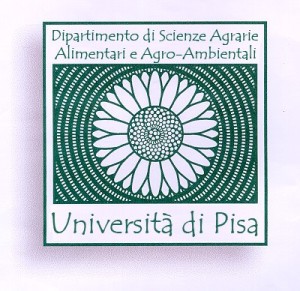Project Abstract
TreeCity involves 8 Italian research units, which are supported by 12 research centres (9 from foreign countries); the project presents a strong interdisciplinary profile and is organised in the following four operative working packages (WP), each of them split in tasks.
WP1: CITY PLANT SYSTEMS AS AN OPEN LAB TO EVALUATE URBAN QUALITY AND STRESS CONDITIONS. Rapid increases in human population and economic development have led to tremendous urbanization: more than 50% of the world human beings is now living in an urban area and 70% will do that in the year 2050, but urban areas are estimated to be less than a mere 3% of the total land of our planet. Trees are essential in the urban environment not only because of their aesthetic and social values, but also for their effects on air quality. Lichens are very sensitive to environmental changes and are good early markers. Issues here dealt with include monitoring of ecosystemic functions in selected areas of important cities, in comparison to reference suburban stations. Non-destructive analyses of relevant ecophysiological parameters, histopathological investigations (also in confocal microscopy, multispectral fluorescence microimaging, SEM, TEM), molecular studies (including transcriptomics) and remote sensing techniques will describe the ability of city plant systems to adapt to present environmental conditions. Special care will be devoted to the role of components of the antioxidant defence system in detoxifying reactive oxygen species (ROS) which are produced as a consequence of stress. Particular attention will be decoted to secondary metabolism (emission of isoprene and volatile and non-volatile isoprenoids, phenylpropanoids and antioxidant enzymes), induction of signal molecules (ET, ABA, SA, JA) and oxidative signalling (ROS profile and NO).
WP2: CONTRIBUTION OF CITY PLANT ECOSYSTEMS TO QUALITY OF LIFE. Eddy covariance analyses in vertical gradients which will be analysed in micrometeorological towers and monitoring of biogenic emissions of VOCs will define of role of trees in the mass balance of pollutants, energy and biologically active molecules in an urban site and in a reference suburban station.
WP3: COMBINED STRESS INDUCTION IN CONTROLLED ENVIRONMENTS TO SIMULATE A 2050 SCENARIO. Climate change, a scientific certainty, is a serious and urgent complex issue, and has been identified as one of the major societal challenges which affect European society at large. Following several methodological approaches (e.g. controlled environment exposure facilities, open-top chambers) selected tree species (Quercus) and lichens will be stressed. Chemical and physical stress (CO2, temperature, water stress, ozone) will be induced to mimic a 2050 environmental scenario (global change). The same analytical protocols described in WP1 will allow the definition of roles of urban trees in mitigation processes of these new and worrisome environmental conditions.
WP4: INTEGRATED MODELLING. Territorial analyses and provisional models based on experimental data captured in WP1 and WP2 will be the bases for the application of Soil-Vegetation-Atmosphere Transfer models. In addition, the UFORE (Urban FORest Effects) model will be validated in our environmental conditions. UFORE has been originally developed in the United States by Prof. David Nowak (an international partner of TreeCity), and estimates the capacity to improve air quality, other environmental benefits and economic value of urban forests. This multidisciplinary approach will finally allow to quantify the ecosystem service of air quality improvement provided by the urban and periurban forests, also supporting stakeholders (policy makers, planners) to devise the best strategies for a cost effective urban green management.
They are useful support for the recognition and quantification of ecosystemic serviced produced by city trees.
TreeCity also includes two logistical WPs, devoted, respectively, to DISSEMINATION OF RESULTS (WP5) and PROJECT MANAGEMENT (WP6).
TreeCity answers several of the societal challenges expressed by Horizon 2020 in terms of wellbeing and climatic change; moreover, bringing together different disciplines and approaches is able to create innovation, best practises and knowledge, by using the best available methodologies and instruments for scientific investigation (all of them already acquired by RUs); the project involves many young scientists and will create job opportunities and cultural growth for younger scientists, PhD students and postdoc fellows.




